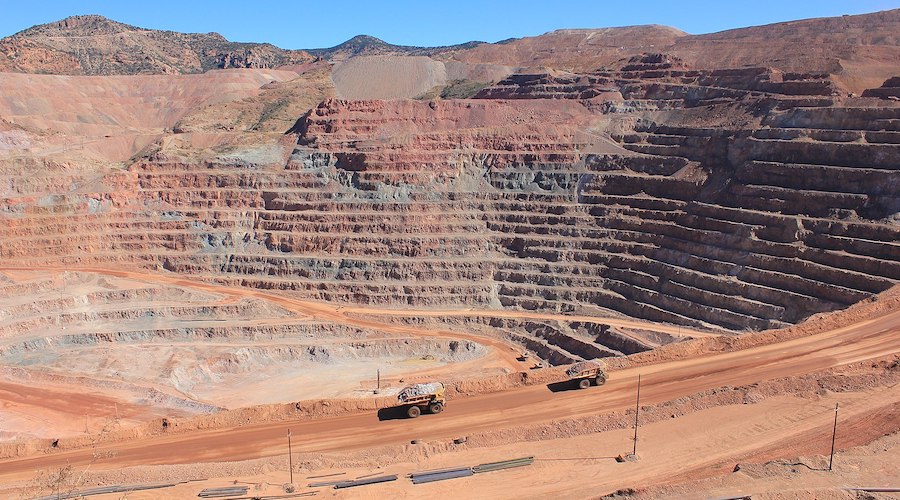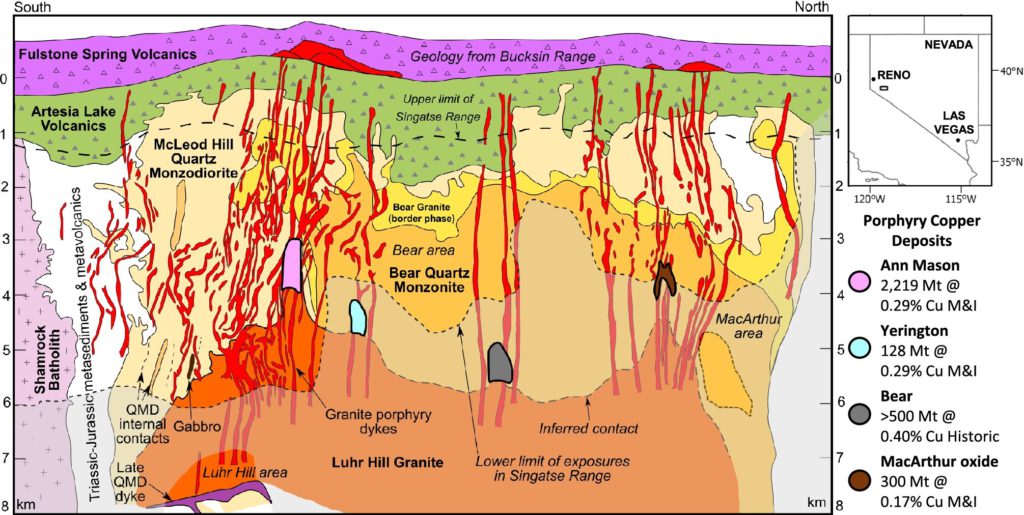
UK-based researchers have discovered that porphyry-type copper deposits form due to a rapid change in the underlying magmatic plumbing system which forms them.
In a paper published in the journal Scientific Reports, the scientists describe a new 4D model for the formation of porphyry-type copper deposits which challenges the current paradigm of a progressive, multi-million-year, arc-scale ramp-up in the ‘fertility,’ or mineralizing potential, of magmatic systems.
According to the group led by Lawrence Carter from the University of Exeter, there may instead be an order of magnitude more rapid switch, over a period of fewer than 200 kyrs, from the intrusion of non-mineralizing to porphyry deposit-forming magmas. The suggested cause of this is a change from magma production in the mid-crust to the lower crust, probably initiated by the intrusion of much hotter magma from the mantle.
In the researchers’ view, these findings will help exploration geologists discover the next generation of porphyry copper deposits.
“Porphyry-type deposits provide most of the world’s copper and molybdenum, as well as large amounts of gold and other metals, which are of increasing demand for green technologies such as electric vehicles, wind turbines and solar panels, and for power transmission,” the team pointed out in a media statement. “As such, they are the principal target of many mining companies worldwide.”

The researchers noted that, despite their importance for the green energy transition, most large near-surface deposits have already been found and therefore geologists are having to explore deeper and under thicker layers of younger rocks to find them.
“There is, therefore, a growing need to better understand where and how porphyry copper deposits form and for new methods to find them,” the statement reads.
The study was carried out in the Yerington Batholith of Nevada, where tilting of the upper crust has provided one of the world’s best-exposed (~8km deep) sections through a magmatic-hydrothermal system, from the volcanic to plutonic environments, including four porphyry deposits.
“To address the previously fragmented understanding of the magmatic timescales associated with porphyry-deposit formation, we have studied the world’s best-exposed porphyry system by integrating field observations and geochemistry with state-of-the-art high-precision zircon U-Pb geochronology,” Carter said.
“We show that magmatic systems can ‘switch-on’ their ability to form ore deposits due to a rapid change in their magmatic plumbing, tapping a deeper, more volatile-rich, ‘fertile’ zone.”
The researcher also mentioned that the study allowed him and his colleagues to show that the distinct ‘fertile’ geochemical signatures associated with ore-forming magmas develop almost instantaneously (<200 kyrs), and are expressed throughout the magmatic system, including in overlying volcanic rocks.
“This increases our confidence in the resolution of geochemical signatures related to ‘fertile’ systems, immensely enhancing their use as exploration tools for porphyry copper deposits,” he said.